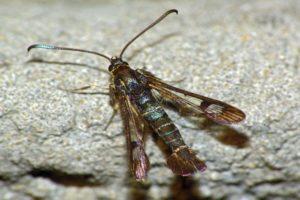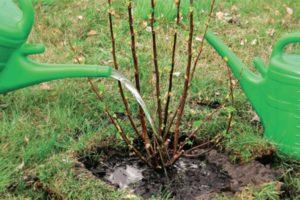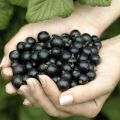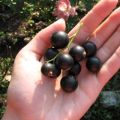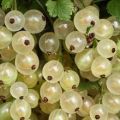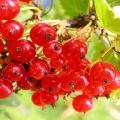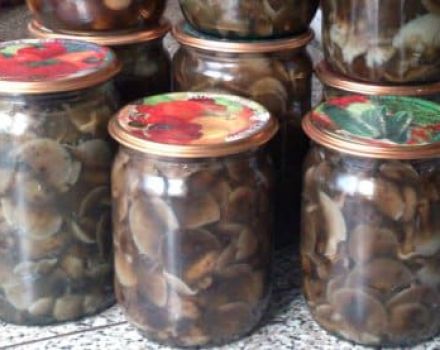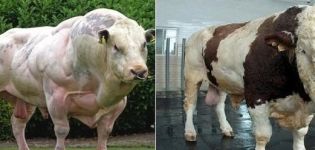Characteristics and description of Nara currants, planting and care
Gardeners grow Nara black currants on their plots for a different purpose: to have fresh vitamins at home in early summer, to stock up on them for future use. Some summer residents plant berries in order to replenish the family budget. This is no accident: the crop is fruitful, the price is high at the beginning of the season, the sales are 100%. It is grown commercially and in small quantities.
History of creation
Cultivation of currants was carried out in the 10th century. It was cultivated by the monks of Kievan Rus. The early ripe Nara currant was created much later - by the domestic breeder A.I. Astakhov. The Nara black currant variety was described and officially recognized in the 90s. The culture grows well in the Middle Lane, cold regions, does not tolerate arid regions.
Description and characteristics of currant Nara
Nara currant grows bush. The plant is stretched up to 1.5 meters, compact. The leaves are large, convex. Regeneration shoots differ from skeletal branches in a light green tint. Young branches of a curved shape.
The currant blooms with pale red inflorescences. 6-10 flowers per cluster. The berries are round, black in color. The pulp is green, aromatic, with a sweet and sour taste. The berry weight is 2-3 grams. Evaluation of taste - 4.3 points.
Early fruiting, berries ripen together, in early June. The yield from one bush is 8-10 kilograms. On an industrial scale, 10 tons of berries are harvested from one hectare.
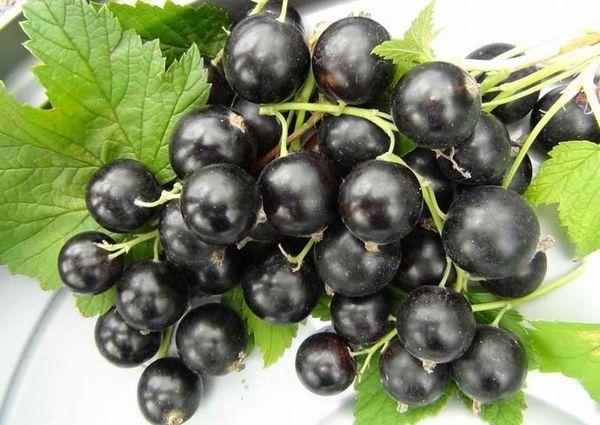
Main positive and negative aspects
Nara currant has established itself with positive properties:
- Resistance to fungal diseases, pests.
- Firmly tolerates frost.
- High yield compared to other varieties.
- Early ripening.
- High content of vitamin C - 179 milligrams per 100 grams of the product.
- Amicable ripening of berries.
- No pollination required.
Disadvantages:
- Poorly tolerates the climate of the southern regions.
- Early flowering. Exposed to frost.
The minimal disadvantages do not negate all the advantages of the Nara currant.
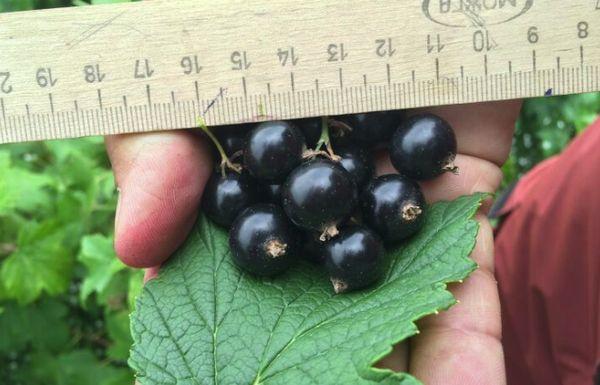
The specifics of growing
Prepare for planting currants in advance. Choose a site, improve the structure of the soil. Currant responds well to organics. The plot is planted with white mustard. Before the green manure is plowed into the soil, gaupsin, trichodermin are added. Mustard enriches the soil with organic matter, prevents diseases, pest attacks.
Landing requirements
Choose a light area for currants. Shading the crop will lead to a decrease in yield, a change in taste, and a decrease in berry size.Currants do not tolerate cold winds. The groundwater level is not less than 1-1.5 meters.
Choose a loose, fertile soil. Loam is ideal for currants. Lime is added to acidic soil, river sand is added to clay soil.
Soil preparation
Saplings are planted in autumn, early spring. The soil is prepared a month before the autumn planting. Free the site from debris, weeds. Humus is introduced into the ground - 3.5 kilograms per square meter. Add 25 grams of potassium sulfate, 120 grams of superphosphate. Together with fertilizers, they dig up a site on a shovel bayonet.
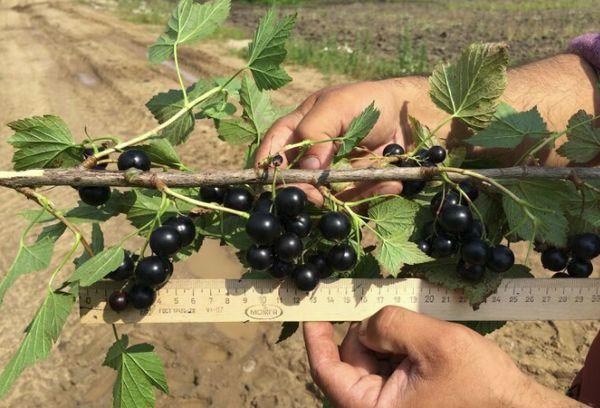
For spring planting, preparation is carried out in the fall.
Choosing a landing method
The bushes are planted in the beds, in the pits. The first method of planting is suitable for waterlogged soil. The height of the beds is raised by 25 centimeters, with a width of 75. The second value changes with the growth of the bush - up to 1.5 meters. Pits are dug according to the scheme 50x50 centimeters, with a depth of 40. The distance between the bushes is 1.5 meters, in rows - 1-1.2.
Landing
When preparing the planting site, fertile soil is laid in one direction, the lower poor layer in the other. The fertile layer is mixed with fertilizers: humus - 2 buckets, superphosphate - 70 grams, wood ash - 3 liters. The nutrient soil is sent to the bottom of the hole, sprinkled on top with a fertile layer. After 3 weeks, planting is carried out:
- Set the bush at an angle of 45 degrees.
- Pour 5 liters of water.
- Sprinkle the root system with a fertile layer.
- The root collar is deepened 6 centimeters.
- Water again abundantly.
- The branches are cut so that 2-4 buds remain on each shoot.
- Mulch with peat, humus.
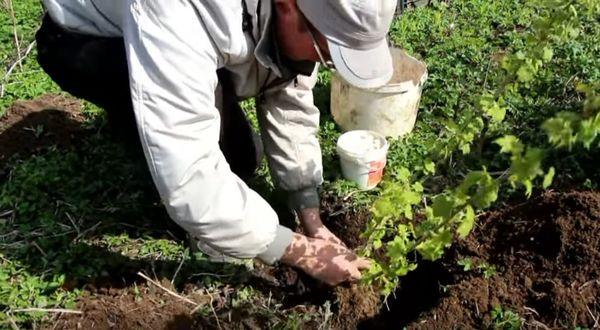
Before planting, inspect the root. Rotten roots are cut off, dry ones are cut to living tissue.
Caring for the Nara currant variety
Growing currants does not require special care. The culture is watered on time, loosened, weeds are removed, fed, a bush is formed.
Watering rules
The currant root system is close to the surface. Therefore, drying out the soil for the plant is undesirable. Regular watering is resumed 3 days after planting. To retain moisture, the soil is mulched with straw.
Top dressing
Currant responds positively to mineral, organic dressings. From organic matter use humus, mullein solution. Root and foliar dressings are useful for the plant.
In spring, the plant needs nitrogen fertilizers to build up green mass. Humus, compost or complex fertilizers are placed in the trunk circle. Before flowering, during the ovary period, the currants are fed with phosphorus-potassium fertilizers.
Shrub pruning
At the age of 4-5 years, the bush has 15-20 skeletal branches. At the same time, branches of different ages should be present (from one to four). Therefore, the formation begins from the moment the seedling is planted and continues annually.
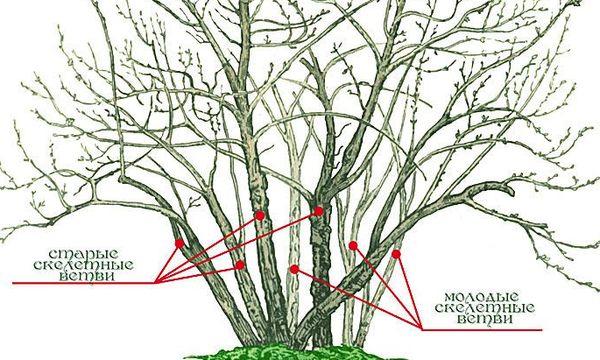
- Planting year - pruning shoots to 2-4 buds on each.
- Next year. The bush is freed from small shoots, weak, underdeveloped shoots. Leave four sturdy renewal shoots. They will become skeletal branches in the future.
- In the second year, the main branches are left, the rest are removed.
- In the third, fourth year, renewal shoots are added to form skeletal branches.
- Old branches last 4 years. Then they are cut out, updated with zero shoots. As a result, branches of different ages are always present on the bush.
Protection against diseases and pests
Prevent diseases, attack of ticks by prophylactic spraying of bushes. In early spring, before the buds open, Bordeaux liquid, Neoron, Mavrik, Arollo are used. If the temperature is below 20 degrees Celsius, the currants are covered with polyethylene after spraying.
The second treatment is carried out after a decade. Repeat spraying before flowering.At the time of the ovaries, the ground part is sprayed with a solution of karbofos. Opponents of chemicals use infusions of onion, garlic husks, wormwood.
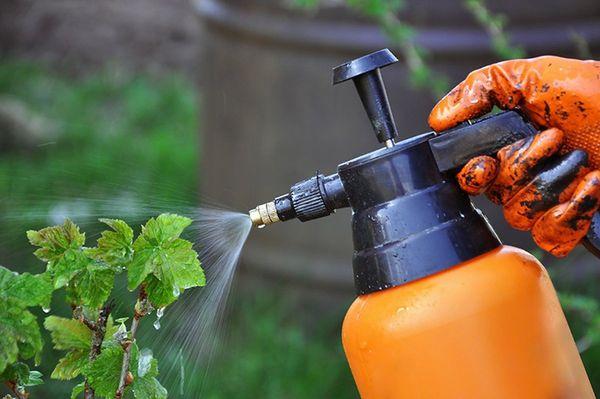
Breeding methods
Currants are propagated in the simplest way - by layering. They choose a strong shoot, stick it to the ground so that the crown is on the surface. The root system is formed during the season. In autumn, the cuttings are separated from the mother bush and transplanted to a permanent place.
Also, adult specimens are propagated by dividing the bush. Dig out a bush and divide it into several parts. Each plot must have a root system, have several shoots. Places of cuts are treated with wood ash.
The third method of reproduction is by cuttings. In the summer, annual shoots are cut off, 20 centimeters long, with the thickness of a pencil. Dipped in sand or soil for rooting. In the fall, they are transplanted to a permanent place.
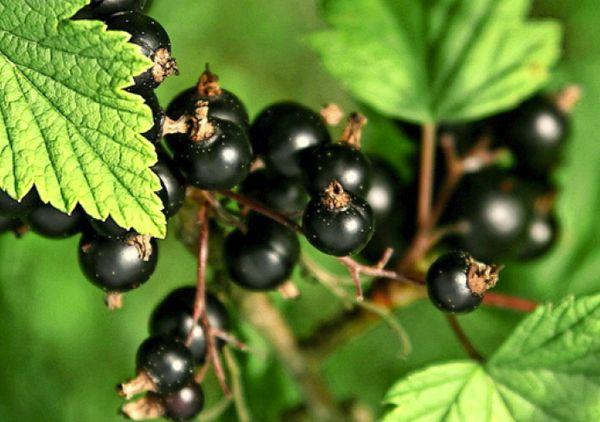
Cleaning and storage rules
Nara currant ripens amicably. Harvesting is carried out in dry weather, when the dew subsides. They pick the berries by handfuls. Sorted out, prepared for storage.
The berry is stored for 2 weeks at an air temperature of 12 degrees, humidity - 40-60%. Deviation from the norm in one direction or another leads to rotting or dryness of the fruit.
If favorable conditions are created, the shelf life can be increased up to 20 days. Distribute dry berries in boxes, send them to a room with a temperature of 0 or minus 1 degrees. In plastic bags, without oxygen, the term is extended up to 1 month. Currants are also stored in the freezer, dry, canned.
